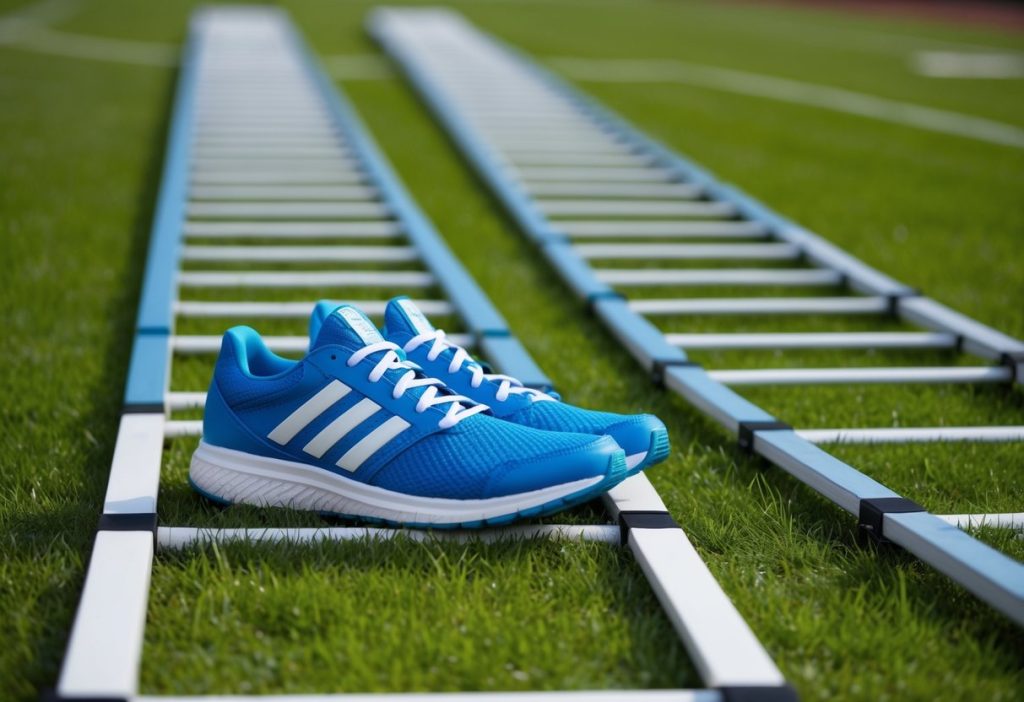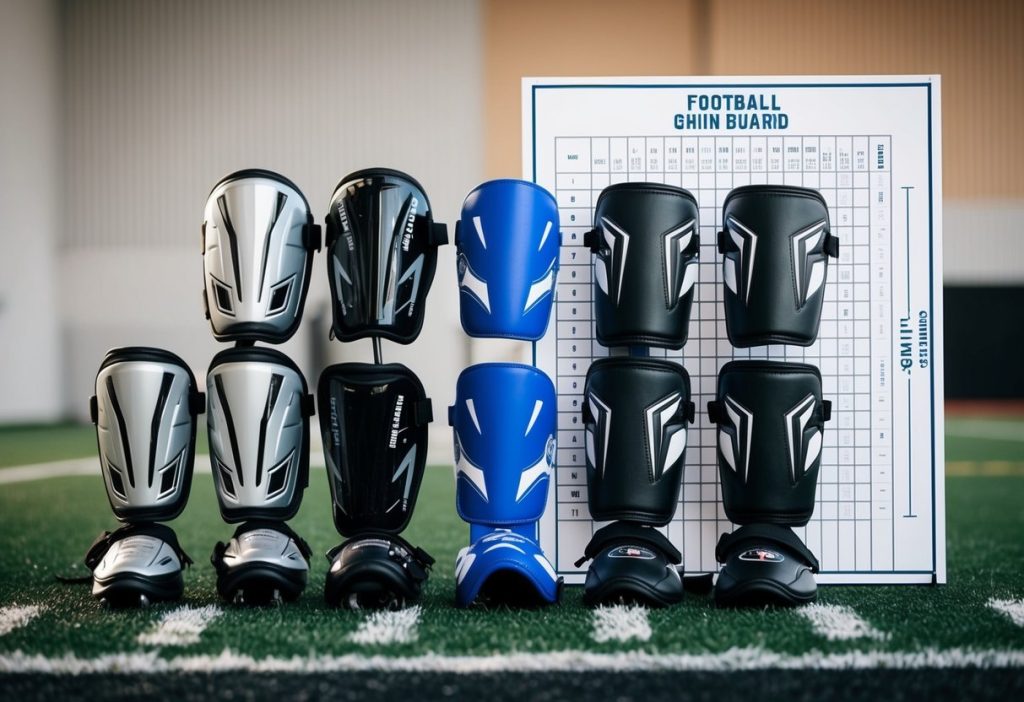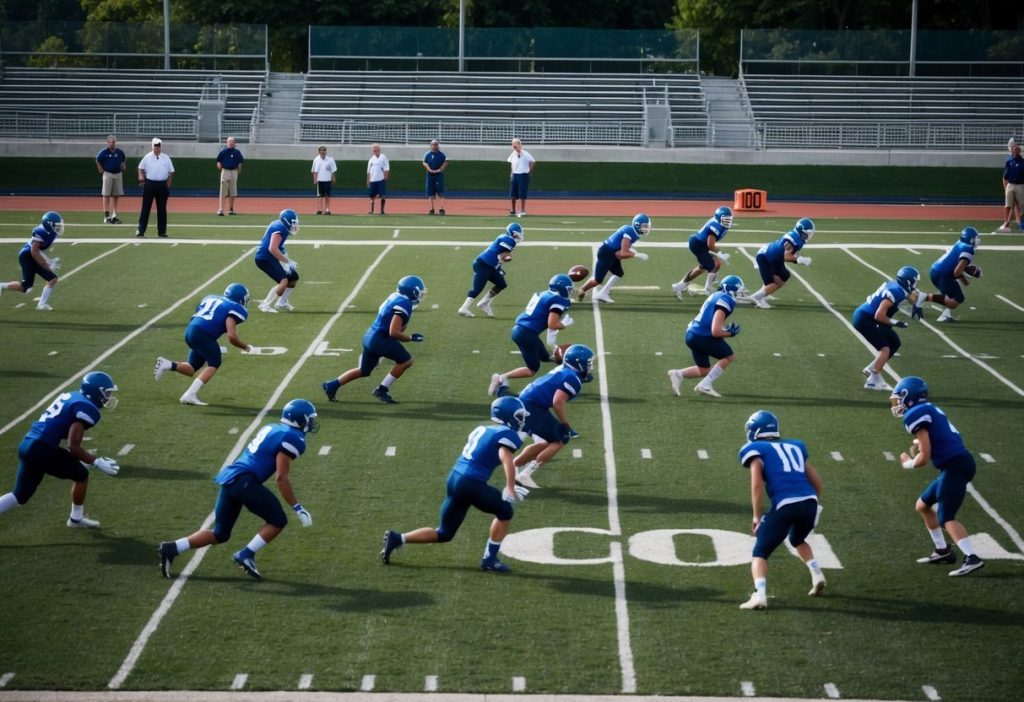6 on 6 Flag Football Defense: Simple Strategies for Solid Stops
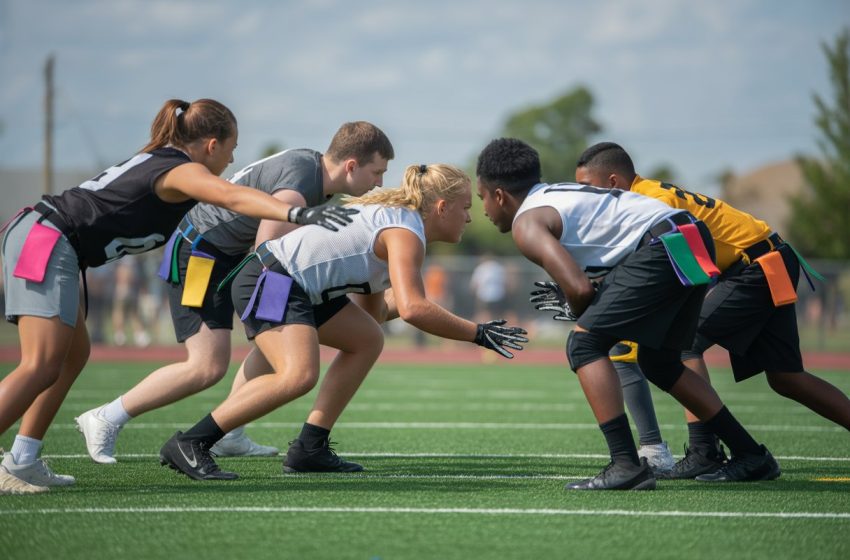
Playing defense in 6 on 6 flag football can be fun and challenging. You need to know how to read the offense, cover both running and passing plays, and work as a team. The key to strong 6 on 6 flag football defense is using the right zone or man-to-man strategies to stop big plays and keep the other team out of the end zone.
If you want to help your team win, learning how to organize your defense, put your fastest players in the right spots, and react quickly makes a big difference. Good defense does more than just prevent scores—it gives your offense more chances to control the game.
Whether you are coaching or playing, understanding basic defensive formations and how to pull flags quickly can help you become a real asset to your team. With a little practice, you can help your team stop runs, break up passes, and have more fun on the field.
Core Principles of 6 on 6 Flag Football Defense
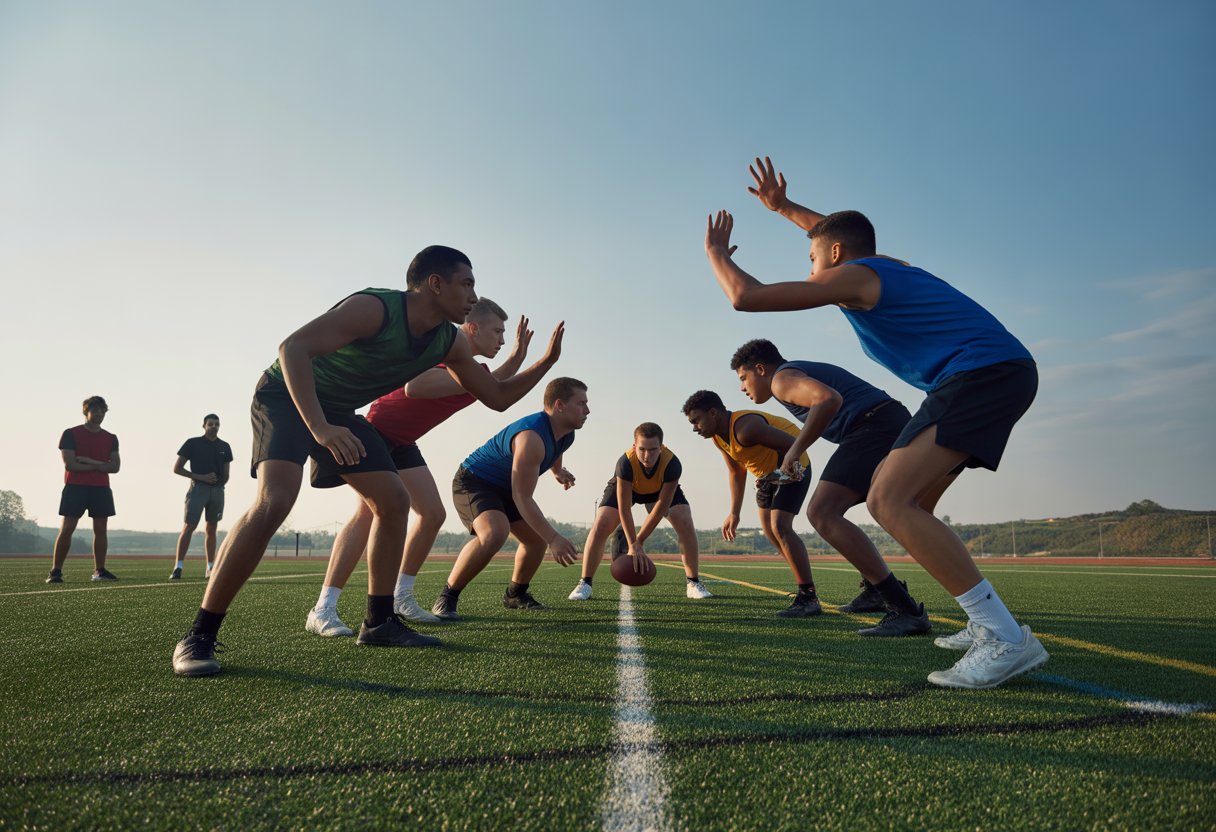
In 6 on 6 flag football, strong defense comes from planning, teamwork, and knowing your roles. Every player has an important part in stopping the offense and following a well-designed defensive playbook.
Understanding Defensive Structure
A solid defensive structure helps your team cover the field, limit big plays, and force mistakes. Most teams use either zone defense or man-to-man defense. In zone defense, each player guards an area of the field. In man-to-man defense, each player marks a specific offensive player.
Zones are popular in youth flag football because they make it easier to stop passing plays and react to runs. A basic layout puts two or three defenders farther back to guard deep passes, while the rest stay closer to the line of scrimmage. Good structure lets you switch between different defensive plays based on what the offense is doing.
Staying organized is key. Players need to talk to each other, watch for offensive motion, and adjust quickly to changes before the snap.
Key Defensive Positions
Every defender has a special job, and picking the right spot for each player is important for your defensive strategy. The main positions include:
- Rusher: Tries to reach the quarterback fast and force a quick throw.
- Linebacker: Reads the play and helps against both the pass and run.
- Cornerbacks: Stay with wide receivers or protect the sidelines.
- Safety: Covers the deep part of the field and helps if a receiver gets open.
Usually, a balance of speed, awareness, and flag-pulling skill is needed for each spot. For example, your best flag puller might play close to the line to stop runs, while your fastest player can be the safety. Good communication helps everyone work together and stick to the plan in the playbook.
Common Defensive Responsibilities
Each position has responsibilities that help protect your side of the field. Here are some examples:
- Rusher: Go straight for the quarterback while staying in control to avoid missing a flag pull.
- Coverage defenders: Keep your eyes on the quarterback but don’t lose track of your assigned area or person.
- Flag pulling: Be ready to pull flags quickly and safely without contact, since tackling is not allowed in flag football.
Also, defenders need to watch for trick plays and passes to the center, who can be a surprise receiver. Following your defensive playbook, sticking to your area, and reacting fast are all part of sound organizational skills. Good teams always talk on the field, call out screen passes, and cover every offensive player until the play is over.
Defensive Formations for 6 on 6
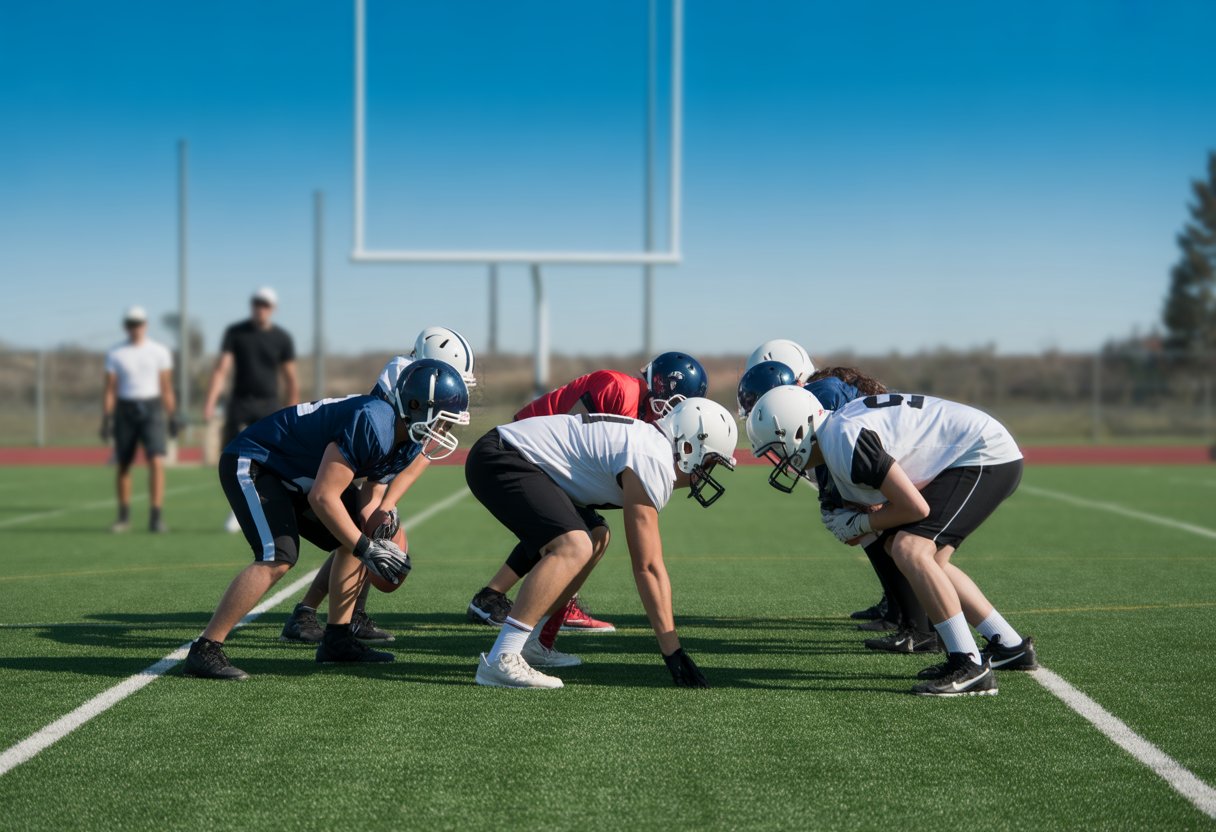
Picking the right formation in 6 on 6 flag football helps your team stop the offense from scoring. Choosing between zone, man-to-man, or hybrid defenses depends on your players’ skills and how the other team plays.
Zone Defense Schemes
A zone defense has each player cover a specific area instead of a single opponent.
The most common setup in 6 on 6 is the 2-3-1 zone. In this formation:
- 2 defenders play up front (near the line of scrimmage)
- 3 defenders cover the midfield
- 1 defender acts as a deep safety
This shape helps protect against both short passes and deep throws.
The front defenders can rush the quarterback or quickly pull flags on short plays.
The midfield players watch for passes in the center of the field.
The single deep defender keeps everything in front, stopping long gains.
Zone defenses let you react quickly to runs or passes.
Assign your best flag puller to the middle so they can move up to stop runs or drop back for coverage.
Use simple diagrams to teach players their zones.
Staying disciplined in your zone is key for success.
Man-to-Man Assignments
In man-to-man defense, each player covers a specific opponent.
You follow your player everywhere, no matter where they move.
This style works well if you have fast, athletic defenders.
One benefit of man coverage is it makes life hard for the offense’s best players.
You can match your top defender against the other team’s top receiver.
The centre on offense might need extra attention in this setup, as they often make quick catches in the middle.
However, man defense gets challenging if opponents run lots of crossing routes or have speedy players.
If any defender gets beat, it can lead to a big play.
Communication is important, especially if you need to “switch” men during tricky plays.
Hybrid Approaches
Hybrid defenses mix both zone and man-to-man.
You might have three players in zone coverage, two on man assignments, and one deep.
This blend can confuse offenses and make it harder to find open space.
For example, you may play zone across the midfield and deep, but put a man defender on the center or best receiver.
This way, you stop the middle while not letting their big playmaker beat you deep.
Some teams use a “box-and-one” where four defenders guard zones, one covers a star player, and the last plays deep safety.
Hybrid schemes let you adjust during a game—change between looks based on the offense’s strengths.
Use diagrams and clear instructions to help your team switch responsibilities smoothly.
Tactics for Stopping Offensive Plays
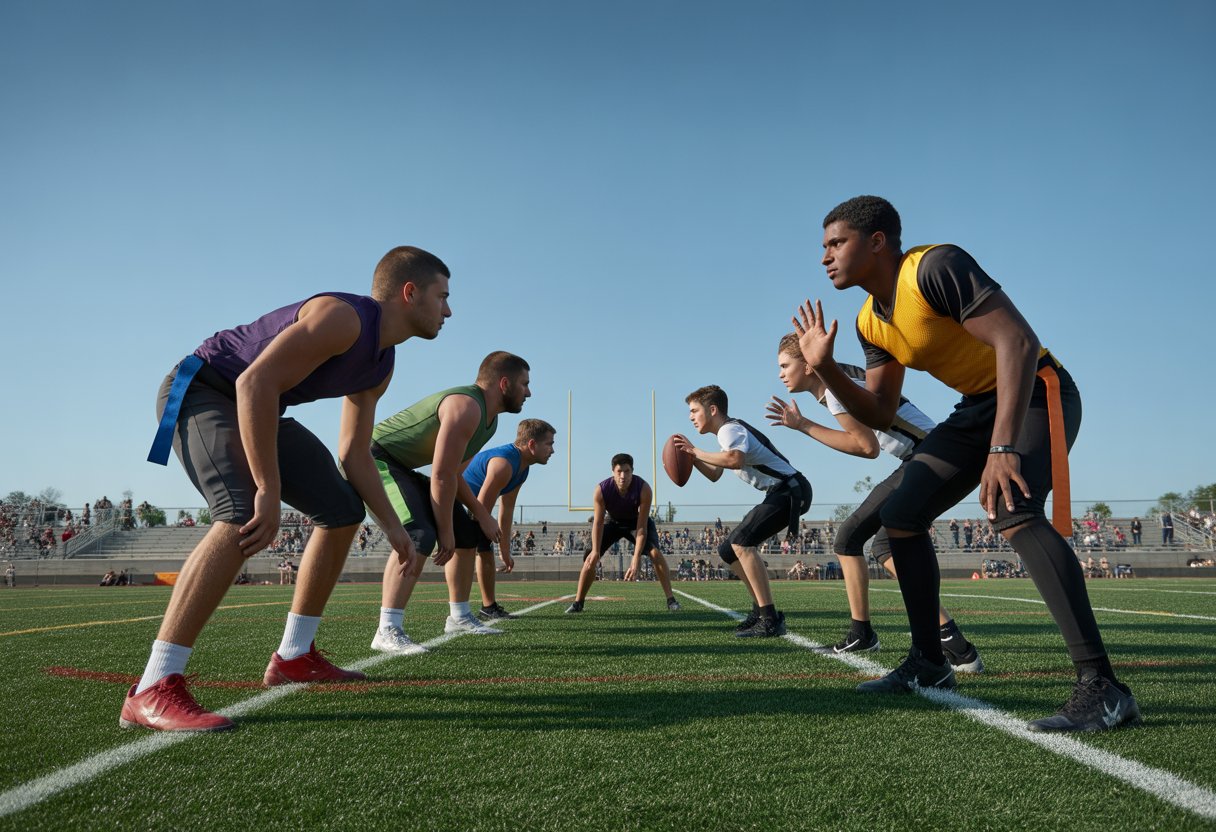
Stopping offensive plays in 6 on 6 flag football takes clear communication and knowing what to watch for. You need different approaches for pass and run plays, and it helps to recognize patterns and team tendencies early.
Countering Pass Plays
When facing a passing offense, you should focus on coverage and pressure. Make sure your defenders are spaced out to cover the main areas where receivers like to catch passes.
A good way to do this is by using a zone defense, where each player is given an area or “zone” to guard instead of following just one receiver. This prevents open spaces for quarterbacks to target and cuts down easy completions.
Have at least one defender act as a safety. The safety stays behind the other defenders and keeps eyes on deeper passes, helping to prevent touchdowns or big plays.
Keep your eyes on the quarterback (QB) and anticipate where they want to throw. Listen to your teammates and call out open receivers. If you see a pass coming, try to get your hands in the way for a block or even an interception.
Key tips:
- Stay between the receiver and the goal line.
- Defenders closer to the line of scrimmage can rush the QB or jump short routes.
- Rotate defenders if a receiver switches sides or motions across the field.
Defending Against Run Plays
Stopping the run is about staying disciplined and not giving up big gaps. Assign players to “contain” the edges so the runner can’t get outside for large gains.
Use a defender or two close to the line of scrimmage to react fast. These players watch the QB and running backs for handoffs or fake runs.
It’s important to avoid overcommitting. If you rush in too fast on a fake handoff, the offense might pull off a reverse or play-action pass.
List for run defense:
- Contain: Keep outside lanes covered.
- Watch the ball: Follow the handoff and react quickly.
- Flag pulling: Practice grabbing flags to stop the runner right away.
Good communication helps everyone know who is covering which spot. That way, you avoid leaving open lanes which runners can exploit. Stay low, keep your eyes up, and close in on the runner as a group to pull the flag.
Practice Strategies and Coaching Points
Building a solid 6 on 6 flag football defense takes smart practice drills and clear coaching. You want your team to know their zones, trust each other, and react fast on game day.
Essential Practice Drills
Use zone awareness drills to help your players understand their areas of responsibility. Give each defender a space to cover and run short passing plays to teach them to read the quarterback and react quickly.
A simple relay drill can improve your team’s flag-pulling skills. Line up players and run offensive players at different angles, coaching defenders to break down, keep their balance, and grab each flag with control.
Communication drills are important too. Run plays where defenders have to call out switches or spot open receivers. This helps your defense stay organized and confident during the chaos of real games.
Sample Drill Table
| Drill Name | Focus Area | Coaching Point |
|---|---|---|
| Zone Drop | Awareness | Watch receiver routes |
| Shadow & Pull | Flag Pulling | Stay low and balanced |
| Communicate & Shift | Organization | Call out assignments |
Teaching Techniques for Defensive Success
Break down defensive concepts into simple ideas. Show your players exactly where to line up by using cones or markers on the field. Walk through plays slowly at first, then speed up as players learn.
Talk about leverage—where each defender needs to position their body to force runners back inside or keep them near the sidelines. Point out both the strengths and weaknesses of each zone for honest teaching.
Give feedback in a positive way. Encourage questions and celebrate smart moves like good flag pulls or quick communication. When a mistake happens, explain what went wrong, then repeat the drill until it feels right for everyone.
Mix up your teaching—sometimes watch film, sometimes demonstrate yourself, and other times let players teach each other. This keeps the team engaged and helps everyone remember key coaching points.
Game Situations and Defensive Adaptability
Your defense often needs to react quickly to game situations like a sudden turnover or a big gain by the offense. Strategy, flexibility, and teamwork help your team limit points and protect the end zone.
Making In-Game Adjustments
When the offense changes tactics, your defense should adjust on the fly. If your opponents start catching the ball in short zones, shift coverage and move defenders up to stop quick gains. If they aim deep, drop your safeties to cover more field and prevent touchdowns.
Talk with your teammates after each down to discuss what you see. Use timeouts or pauses in play to realign the defense or switch from zone to man-to-man coverage. Making small shifts, like moving your fastest player to cover their top receiver, can make a big difference.
List of quick adjustments:
- Rotate defenders after a score or big play
- Switch from Cover 2 to Cover 3 for deeper coverage
- Assign “spy” players to contain strong running threats
Stay vocal and use clear signals so everyone reacts together.
Change of Possession Readiness
Whenever a possession changes—after a turnover or when the other team completes all their downs—you need to reset quickly. Fast transitions help you keep the other team from catching you off guard. Watch the points and score closely; if you’re ahead, the focus is different than if you’re trailing.
When your team is suddenly on defense after a turnover, call out assignments right away. The defense should line up fast and mark up against the offensive threats. Don’t leave gaps that can lead to a fast touchdown.
After a score, get set so you’re ready for anything, especially trick plays or deep passes. A well-organized team regains control and prevents easy points after a change of possession.
Maximizing Defensive Value
To get the most out of your defensive group, make sure everyone understands their role on every play. Good communication helps cover zones, block passes, and stop running plays. Make sure that every defender knows how many downs the offense has left and how close they are to a first down or the end zone.
Keep your eyes on both the ball and the players you’re covering. Jump in front of passes to break up plays or go for an interception. Forcing turnovers means more chances for your offense to score.
If you catch the ball on defense, run it back if it’s safe—every yard matters. Keeping the other team from scoring or getting a first down increases your value as a defensive unit. Making smart plays throughout the game can be the difference between winning and losing.
Table: Key Defensive Actions by Situation
| Situation | Recommended Defense Action |
|---|---|
| Close to scoring zone | Tight man-to-man, no gaps |
| Facing deep passes | Drop safeties, protect deep field |
| Change of possession | Quick alignment, call assignments |
| 3rd/4th down defense | Strong pressure, play for turnover |
Frequently Asked Questions
You need a strong plan to defend in 6 on 6 flag football. Knowing which formations and drills work best can help your team pull flags and stop both running and passing plays.
What is the most effective defensive strategy for 6 on 6 youth flag football?
A zone defense often works well because it lets players cover areas of the field instead of following just one receiver. This approach makes it harder for the offense to find open spaces. If your players understand their zones, they can react quickly to passes and runs.
Which drills are essential for improving a 6 on 6 flag football team’s defense?
Flag pulling drills help players get better at stopping the ball carrier without contact. Reaction drills, like having players chase and change direction quickly, improve speed and awareness. Passing lane drills also teach defenders to watch the quarterback and block easy passes.
How can a defense be structured to effectively stop the run in 6 on 6 flag football?
Placing your best flag pullers closer to the line of scrimmage helps slow down the run. You can also have one or two defenders “spy” on the quarterback or running back, so they can cut off running lanes. Keeping defenders spread across the field makes it hard for the offense to find openings.
Can you suggest some basic formations for a 6 on 6 flag football defense?
Common formations include a 3-2-1 (three front defenders, two linebackers, and one safety), and a 2-3-1 (two up front, three in the middle, one deep). These setups give good coverage against both runs and passes. They let you adjust based on the offense’s strengths.
What are key considerations when creating a playbook for a 6 on 6 flag football defense?
Keep the language simple and the plays easy to remember. Use clear names for each play so kids know where to line up and what their job is. Make sure every defender knows if they are playing zone or man-to-man and who calls adjustments on the field.
In what ways do defensive tactics in 6 on 6 flag football differ from 7 on 7?
In 6 on 6, there’s less help on each play, so spacing and communication are even more important. Players cover more ground and need to be quick. In 7 on 7, you have an extra defender, so coverage can be tighter and there are more double-team options.

